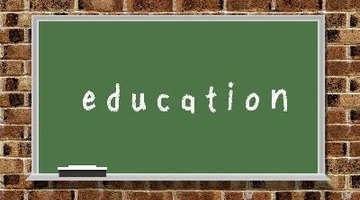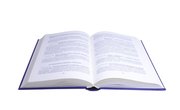An Individualized Education Plan (IEP) is a legal document written for every student receiving special education services. The IEP outlines the specific educational program that will be implemented to meet individualized goals. Because the plan is individualized, teachers must customize measurable goals for each student, based on needs assessed through evaluation reports and classroom progress. This often includes reading fluency, which is a functional concept needed to develop overall reading and comprehension abilities.
Planning the IEP Goals
Review the Evaluation Report (ER). Areas of need are explicitly listed and explained in the report. These are the skills that need to be included in the IEP.
Review the student's classroom performance. Look at curriculum-based assessments and grades. Understanding your student's strengths and weaknesses will help in developing the IEP. For example, how does your student perform on timed reading tasks?
Review the current curriculum. Identify areas where the student has failed or is near failing. This will also be helpful when planning to remediate.
Writing Measurable Goals
Begin by writing an observable behavior statement. This is the sentence that states an individual skill the student will learn. Begin the sentence with "The student will...." Be specific.
Example: "The student will correctly pronounce and read a three-word sentence."
List the conditions for each goal. These are specific circumstances or assistance that influence behavior performance. "Given" is the starter phrase for the condition segment of the goal statements.
Example: "Given a set of five one-word flashcards, the student will correctly read three words."
Include ways to measure the behavior. This can be accomplished by rate, time or percentage. Rate compares the number of correct answers to the total number of responses (e.g. completing four of five assignments). Time is the pace at which the behavior must be completed (e.g. reading 12 words in 45 seconds), while percentage refers to the portion of the item set correctly completed (e.g. 80% accuracy).
Combine the observable behavior, condition and measure to form a well-written IEP goal.
Example: "Given _, the student will with % accuracy."
Often using percentages is useful when writing reading fluency goals, because fluency revolves around accuracy.
Keep goals simple, objective and measurable. Make sure the goals are attainable. For example, if a student can barely read, do not write a goal requiring the student to successfully read 100 words in a minute.
Related Articles
References
Writer Bio
Kelly Crawford began writing in 2007. She contributes to numerous psycho-educational evaluation reports. She received her Bachelors of Arts in psychology as well as her Master of Science and Education Specialist Certification in school psychology from the California University of Pennsylvania. Crawford is a Nationally Certified School Psychologist working within the intermediate unit.











